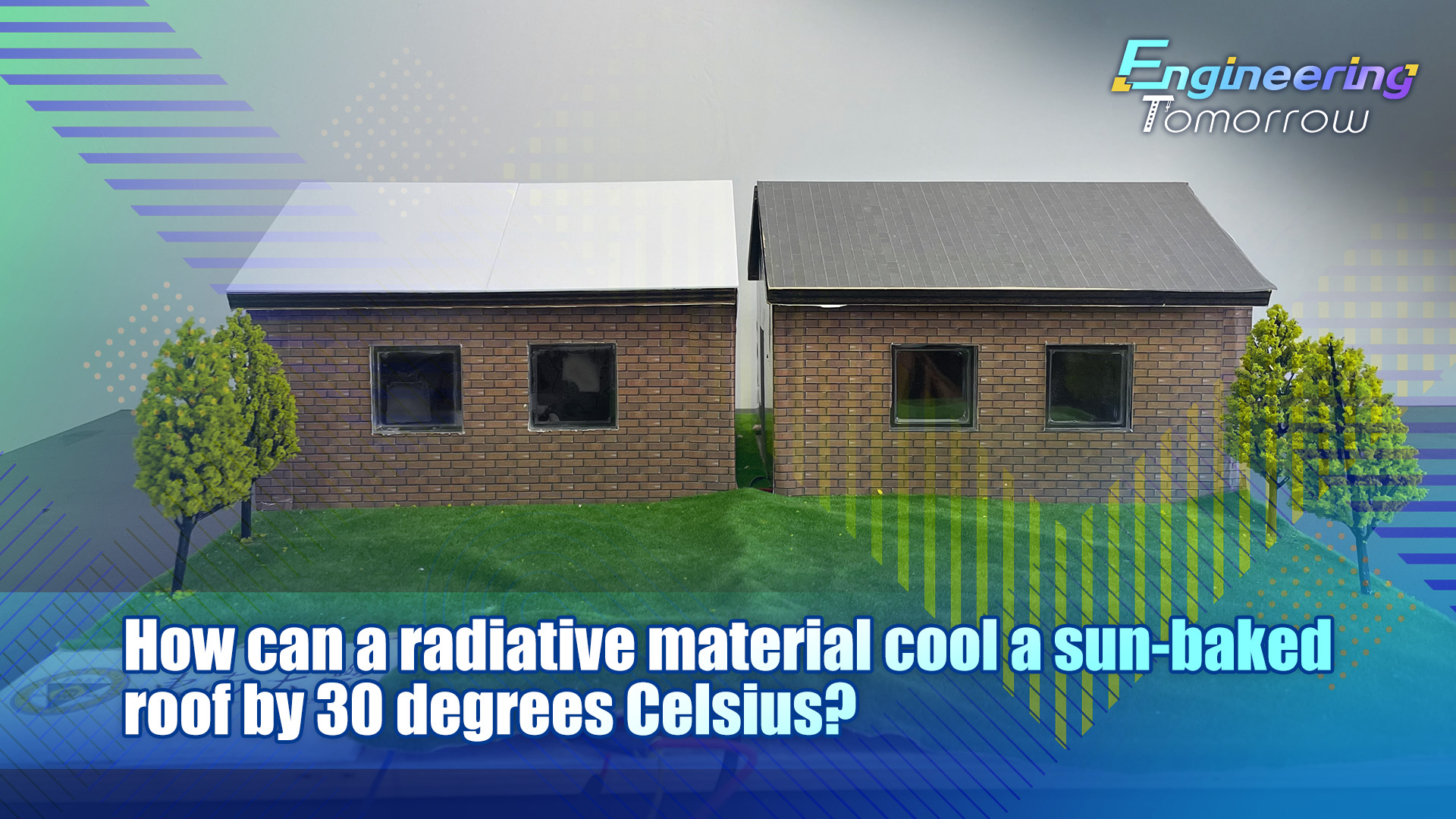Imagine the discomfort of staying in a room without air conditioning on a hot summer day, with the roof heated by scorching sunshine to over 60 degrees Celsius. Nowadays, scientists can work wonders by replacing the conventional roof with a high-tech one that cuts the sun-burned roof temperature in half.
Zhao Dongliang, a professor at the School of Energy and Environment at Southeast University, has dedicated years to researching materials for cooling buildings.
The scientist told CGTN that these materials are just like the screen protectors applied to our mobile phones; the difference lies in their opacity, with some capable of withstanding temperatures up to 1,500 degrees Celsius. These materials can significantly cool buildings during hot summers, thereby reducing electricity bills from air conditioners.
He installed such material on an airbridge at Hangzhou Xiaoshan International Airport, where temperatures can exceed 60 degrees Celsius during hot summers.
"After applying our material, the temperature on the surface of the airbridge, as we measured, is about 32 to 34 degrees Celsius, which means it cools at about 25 to 30 degrees Celsius," Zhao said.
This temperature reduction is equivalent to a 30 percent or even over 40 percent decrease in the energy consumption of air conditioners, according to Zhao.
Such application has been promoted to dozens of projects, including airports in Japan and Singapore, high-speed rail stations, grain storage buildings, wine cellars and data centers, Zhao added.
Technology behind the materials
The technology behind these special "screen protectors" is radiative cooling, a method that cools buildings by reflecting heat through a cold surface.
Taking the Earth as an example, the surface maintains a stable temperature range by radiating heat back to the universe as long-wave infrared radiation.
"The atmosphere has different transparency for radiation in different bands. We found that the transparency of the atmosphere is very, very high within the wavelength range of 8 to 13 microns," said Zhao.
"The radiative cooling technology we studied is to maximize the radiation performance on the surface of the object at 8 to 13 microns, so that the radiation cooling of the object itself can be maximized to cool the temperature," he added.
Over the past 10 years, scientists around the world have been striving to find materials for radiant cooling and progress has been steady. However, there has been issues with finding a substance that is low-cost, more robust to long-term weathering with good mechanical properties, and can be mass produced, according to Zhao.
Here is another question: what if cooling is not needed in the winter or at night in areas with four distinct seasons? The scientist said this is also what they are striving for.
Zhao said they are studying to improve the cooling effect of some materials in summer and weaken their cooling effect in winter, or even make some improvements to some materials so that they can have a certain heating effect in winters and meet the energy consumption requirements of the buildings in different seasons and time periods.
The future of buildings
Scientists at the European Union's Copernicus Climate Change Service have confirmed that 2023 will officially be the hottest year on record, surpassing pre-industrial levels by 1.4 degrees Celsius, as reported by CNN in early December. A rise of the 1.5-degree Celsius benchmark may exceed the capacity for adaptation by humans and ecosystems.
According to the International Energy Agency, energy use in buildings accounts for about 30 percent of global final energy consumption.
"I think the design of buildings in the future will really be to adapt to local conditions," said Zhao.
From his perspective, future buildings will leverage natural energy sources, including solar energy, radiative cooling systems, and ground- and water-source heat pumps, thereby enhancing energy efficiency and reducing active energy consumption in buildings.
China's role in refrigeration technology in the world
Zhao believes that China is "definitely in the first echelon internationally," whether from a scientific research perspective or in terms of the industrialization of the refrigeration industry.
He noted that Chinese scholars have been highly active in recent years at the International Congress of Refrigeration, held by the International Institute of Refrigeration every four years, and many awards, including those for the best papers, have been bestowed upon Chinese scholars.
"Some of the leading refrigeration companies in China, such as Midea, Gree and Haier, are well-known in the world," he added.
Video editor: Liu Binyue, Yang Zhengyao
Copy editor: Merna, Bhargab Sarmah
Cover image designer: Li Jingjie


